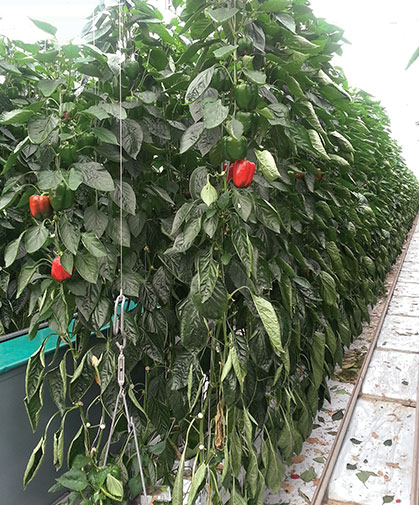Greenhouse Peppers - Key Growing Information
Sweet peppers are, to many people's surprise, among the most versatile of foods for cooking. Because they can be consumed raw or cooked, in salads, stir-fries, casseroles, tacos, or as a simple snack, they are found in a great number of dishes and situations. Adults love them, kids love them, and best of all, you can grow them in your own home greenhouse, warm garden plot, of ground container.
There are several ways to ensure that your peppers grow up quickly into a beautiful, large and tasty harvest. Ensuring that each plant has lots of space, plenty of sunlight, good fertiliser, regular watering and a protective covering of mulch, will increase your chances of producing the crop you envision when you start out in the spring. Of course, using a greenhouse allows you to better control the environment, and to increase the average temperature, which in most areas of the UK is important when growing a crop that originates in warmer climates.
The difference between growing peppers in the field and in protected culture is much like the difference between determinate and indeterminate tomatoes. In the shorter field season, pepper plants are pruned minimally or not at all and allowed to develop as many fruits and side shoots as possible to form a bush plant habit, much like a determinate tomato. In protected culture, plants are encouraged to grow up and set a controlled amount of fruit, more like a pruned indeterminate tomato. The tall plants take advantage of all the vertical space in the greenhouse, and the fruit pruning keeps the plant productive over a very long season by always keeping the fruit load balanced with the amount of plant that is available to support it.

SCIENTIFIC NAME: Capsicum annuum
CULTURE:Sow seeds in desired medium 6–8 weeks prior to transplanting. Maintain a constant 80–90°F (27–32°C) soil temperature. When first true leaves just show, transplant the seedlings into cell-type containers or blocks. 2" or larger containers will produce larger, stronger root systems; 4" blocks are the standard. Grow plants at 70–74°F (21–23°C) days and 68°F (20°C) nights. Fertilize with a complete nutrient solution (EC 1.5–2, pH 5.2) or equivalent as needed to keep plants dark green and healthy. When transplanting into the greenhouse, maintain temperatures of 73°F (23°C) days and 70°F (21°C) nights for the week after transplanting. This promotes rapid vegetative growth and root establishment. 7–10 days after transplanting, lower temperatures to 73–75°F (23–24°C) days and 63–64°F (17–18°C) nights. For two-stemmed plants, use a plant density of 3–3 1/2 plants/square meter, which results in 6–7 stems/square meter (9 sq.ft.). Plants can be pruned to 4 stems, maintaining 6–7 stems/square meter (9 sq.ft.), but fruit will be smaller. Remove flowers up to the second or third node after initial branching to allow the plant to reach a suitable size before trying to support a fruit load.
TRELLISING:We recommend pruning the plants to 2–4 stems and trellising them up a string, like greenhouse tomatoes.
HARVEST:Harvest peppers when they are 80% or more final ripe color.
DISEASES AND PESTS:Use crop rotation or new media to reduce soilborne disease problems. Use regularly scheduled releases of beneficial insects to control pests.
DAYS TO MATURITY:From transplanting.
SEED SPECS:SEEDS/OZ.: 3,200-4,150 (avg. 3,700).
TRANSPLANTS:Avg. 950 plants/1,000 seeds.
MINI:10 seeds.
PACKET:25 seeds, unless otherwise noted.







